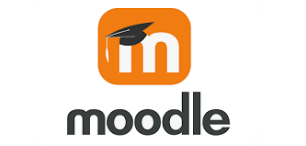Implementing Moodle in Educational Institutions: A Complete Guide

In today’s digital era, education is rapidly transforming due to the growing need for online and hybrid learning. One of the most widely used solutions by schools, universities, and training centers is Moodle—a flexible, powerful, and open-source Learning Management System (LMS) trusted by millions of educators worldwide.
Table of contents:
- What is Moodle?
- Benefits of Implementing Moodle in Education
- Steps to Implement Moodle in an Educational Institution
- Challenges in Implementing Moodle
- Case Study Example
- Conclusion
- Frequently Asked Questions (FAQ)
This article explores how Moodle can be implemented in educational institutions, from planning and setup to customization and evaluation.
What is Moodle?
Moodle is an open-source LMS that enables educators to create, manage, and deliver online learning experiences. With features such as course management, assignments, quizzes, forums, and plugin integration, Moodle provides a comprehensive platform for digital education across various sectors.
Benefits of Implementing Moodle in Education
- Flexible Access
Teachers and students can access learning materials anytime, anywhere. - Centralized Learning Management
Courses, assignments, and grades are stored in one unified system. - Improved Collaboration
Built-in forums, chats, and interactive activities foster communication. - Open-source and Customizable
Fully adaptable to an institution’s branding and specific requirements. - Cost Efficiency
No licensing fees; costs are limited to hosting, server infrastructure, and IT support.
Steps to Implement Moodle in an Educational Institution
1. Needs Analysis
- Define the number of users (teachers, students, administrators).
- Identify specific requirements (e.g., integration with academic systems, automated grading reports, video-based learning).
2. Infrastructure Preparation
- Choose a hosting option: self-hosted (on-premise or cloud) or MoodleCloud.
- Prepare the server (minimum: dual-core CPU, 4GB RAM for small-scale usage).
- Set up a domain name and SSL certificate for secure access.
3. Moodle Installation
- Install Moodle on a Linux server (Ubuntu/CentOS recommended).
- Core components: PHP, MySQL/MariaDB, and Apache/Nginx.
- Configure the database, admin account, and system language.
4. Customization & Integration
- Apply institutional branding with themes and layouts.
- Add plugins (e.g., quizzes, attendance tracking, Zoom/BigBlueButton integration).
- Integrate with Single Sign-On (SSO) or the existing academic system.
5. User Training
- Conduct workshops for teachers and students.
- Provide digital manuals or video tutorials for easier onboarding.
6. Evaluation & Monitoring
- Track system usage (logins, course activity, student progress).
- Gather feedback to refine user experience.
- Perform regular updates for security and stability.
Challenges in Implementing Moodle
- Low digital literacy among teachers or students.
- Initial infrastructure costs when self-hosted.
- Need for IT support to handle maintenance and troubleshooting.
- Resistance to change from traditional teaching methods.
Case Study Example
A university in Southeast Asia implemented Moodle to support hybrid learning. Within one semester, online attendance increased by 30%, and assignment submission became more organized since everything was centralized. Although initial training for lecturers was challenging, Moodle ultimately improved digital learning quality at the institution.
The Moodle installation on Ubuntu operating system can be found on How to Install Moodle 4.4.3 on Ubuntu 24.04 : Step-by-Step Guide article.
Conclusion
Moodle offers an effective, scalable, and cost-efficient solution for educational institutions looking to modernize their learning environments. With proper planning, infrastructure setup, and user training, Moodle can significantly enhance both online and hybrid education experiences.
Frequently Asked Questions (FAQ)
1. Is Moodle free?
Yes. Moodle is open-source and free to use, but institutions must cover costs for servers, hosting, and maintenance if self-hosted.
2. Is Moodle suitable for small schools?
Absolutely. Small schools can use MoodleCloud with minimal setup and no IT team required.
3. Can Moodle be used for hybrid learning?
Yes, Moodle supports both online and blended learning models.
4. Does Moodle integrate with Zoom or Google Meet?
Yes, Moodle supports third-party plugins for video conferencing integration.